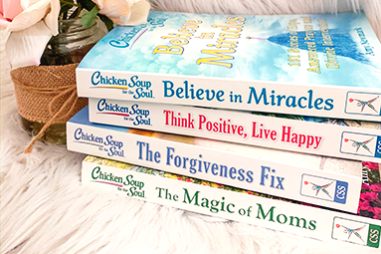Dissecting a Chicken (Soup Story)
By Tracy Crump
Chicken Soup for the Soul has been around an incredible thirty years and is considered the best-selling trade paperback series in publishing history. Its longevity is due in part to the diverse writers who contribute to its varied titles. How could you become one of those writers?
I’ve found there is no one right way to write a Chicken Soup story, but we can learn successful techniques by reading—and studying—their published stories. Let’s try dissecting this chicken and see what makes it cluck.
Head
Most writers know the head (I mean opening) must hook the reader. Your goal is to pique your readers’ curiosity and keep them reading. The beginning of your story is disproportionately important, yet you can find many ways to effectively kick off a Chicken Soup story.
* Dialogue always adds interest and catches your reader’s attention, but since characters have not been introduced yet, it can cause confusion. If you use this method, be sure it’s clear from the beginning who is speaking. Few Chicken Soup stories open with dialogue.
* Shocking statements grab readers’ attention and make them want to read more to find out what is going on. Just be sure the statement is relevant and stay true to your story. Don’t let readers down by tricking them with an irrelevant assertion.
* Setting can ground the story in time and place, but it can be boring if you’re not careful. Hold to the maxim that it’s taboo to open with a weather report. Give just enough detail that readers picture the scene.
* Sensory details provide a connection with many people. Music and art touch hearts in ways other means don't, so paint a picture with your words or recall a familiar song (but remember never to quote song lyrics without permission). Don't forget the underused sense of smell, shown to be most connected with memory.
* A question can draw readers in. It doesn’t always have to be a direct question. Even when implied, it will get the reader thinking and engaged. Be sure that if you ask a question at the beginning, you answer it by the end.
* Humor is always a big hit with Chicken Soup for the Soul, so much so that they produce whole books of humorous stories. If you can start with a humorous statement or scene, you’ll likely hook readers. Just keep in mind, they’ll expect the rest of the story to continue along that track.
Tail
The closing of a Chicken Soup story is almost as important as the opening. You must resolve any conflicts, answer any questions, and bring it to a satisfying conclusion—without belaboring the point. In other words, don’t overcook the chicken but bring it to a boil just long enough to produce a delicious story. You’ll also need to make sure your takeaway is clear. Having a closing in mind gives you a goal in working through your story. Here are six ways to conclude a Chicken Soup story.
* Tie the closing to the title, the opening, or a turning point in the story to bring your tale full circle.
* End with a lesson learned. Most Chicken Soup stories include the takeaway in the closing. What did you learn from the experience that you can pass on to your reader? Just remember not to finish with “and the moral is…” It’s not an Aesop’s fable.
* If the story is humorous—or sometimes even if it isn’t—close with a punch line to leave the reader happy.* Conclude with a repeated line or twist on a repeated line used throughout to connect the end to the rest of the story. For example, one story repeated “good nurses don’t cry,” but the author ended with “good nurses do cry.”
* Elicit emotion. Chicken Soup says they want their stories to “close with a punch, creating emotion rather than simply talking about it.” If you can rouse tears or laughter at the close, you’ll thrill the editors.
* Pay it forward by showing how the lesson you learned prompted you to use this knowledge to help others. Chicken Soup is big on community service, and they like stories that help readers “discover basic principles they can use in their own lives.”
Body
Finally, you need something to hold this chicken’s head and tail together. The middle or “guts” of the story must provide a conflict. That doesn’t mean the characters have to break out in a fight. You just need some kind of struggle or obstacle for the main character (which is usually you) to overcome. Some of the most interesting stories show characters bumping against a brick wall time and again but then finding ways over, around, or through it to conquer their problems. Conflict draws readers along, keeps them wondering what is going to happen next, and makes them root for the protagonist.
Now that you’ve successfully dissected a Chicken Soup story, you can hatch one of your own worth crowing about. Then let it cross the road to success. (I mean submit it to Chicken Soup for the Soul!)
Tracy Crump dispenses hope in her award-winning book, Health, Healing, and Wholeness: Devotions of Hope in the Midst of Illness. She has published numerous articles and devotions but is best known for contributing twenty-two stories to Chicken Soup for the Soul books, and she teaches workshops on writing for the series. Her newsletter, The Write Life, includes story callouts for several anthologies. In 2022, she started a blog for caregivers, our unsung heroes. But her most important job is Grandma to five completely unspoiled grandchildren. Connect with Tracy at https://tracycrump.com/






Excellent. Thank you Tracy. :-)
ReplyDelete